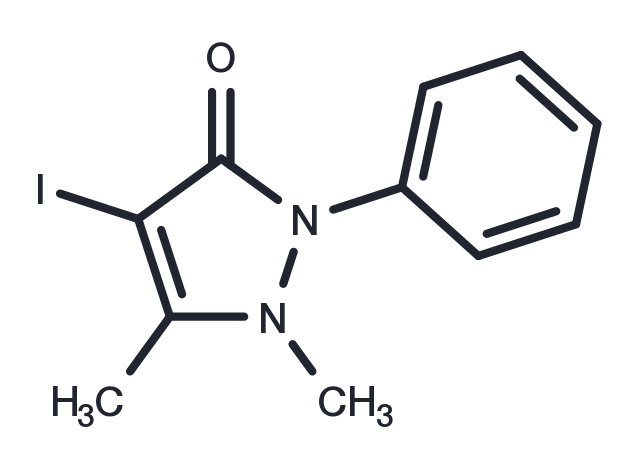Powder: -20°C for 3 years | In solvent: -80°C for 1 year


Iodoantipyrine (Arthripur) is a commonly-used indicator and is used to evaluate in rats by measuring torcular venous efflux after systemic injection of the indicator under conditions of normal and high CBF.

| Pack Size | Availability | Price/USD | Quantity |
|---|---|---|---|
| 5 mg | In stock | $ 50.00 | |
| 10 mg | In stock | $ 70.00 | |
| 25 mg | In stock | $ 114.00 | |
| 50 mg | In stock | $ 167.00 | |
| 100 mg | In stock | $ 248.00 | |
| 500 mg | In stock | $ 535.00 | |
| 1 mL * 10 mM (in DMSO) | In stock | $ 62.00 |

| Description | Iodoantipyrine (Arthripur) is a commonly-used indicator and is used to evaluate in rats by measuring torcular venous efflux after systemic injection of the indicator under conditions of normal and high CBF. |
| Synonyms | Jodantipyrine, EINECS 204-966-6, Arthripur, Iodophenazone |
| Molecular Weight | 314.12 |
| Formula | C11H11IN2O |
| CAS No. | 129-81-7 |
Powder: -20°C for 3 years | In solvent: -80°C for 1 year
DMSO: 55 mg/mL (175.09 mM)
You can also refer to dose conversion for different animals. More
bottom
Please see Inhibitor Handling Instructions for more frequently ask questions. Topics include: how to prepare stock solutions, how to store products, and cautions on cell-based assays & animal experiments, etc.
Iodoantipyrine 129-81-7 Others Jodantipyrine EINECS 204-966-6 Arthripur Iodophenazone inhibitor inhibit
